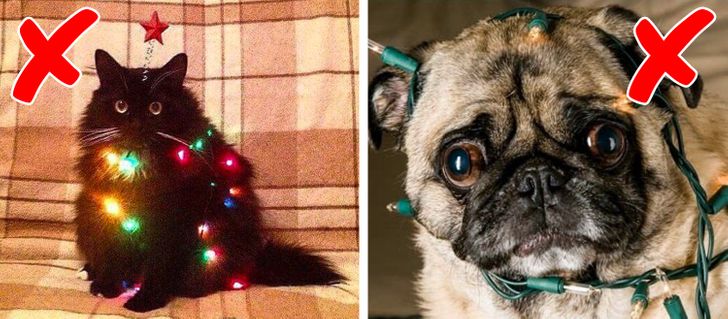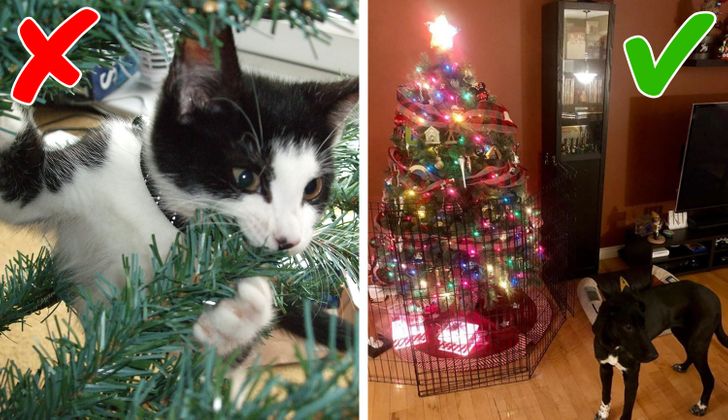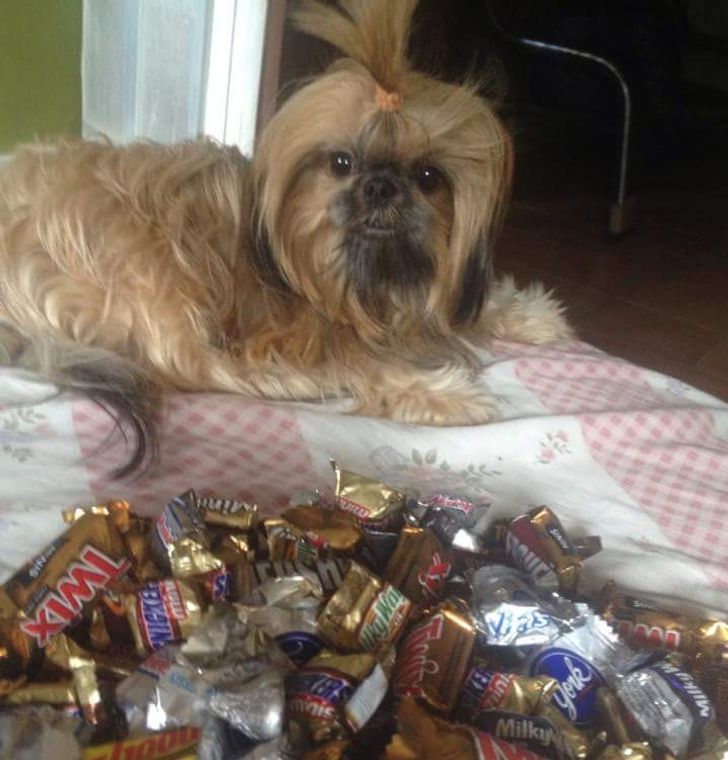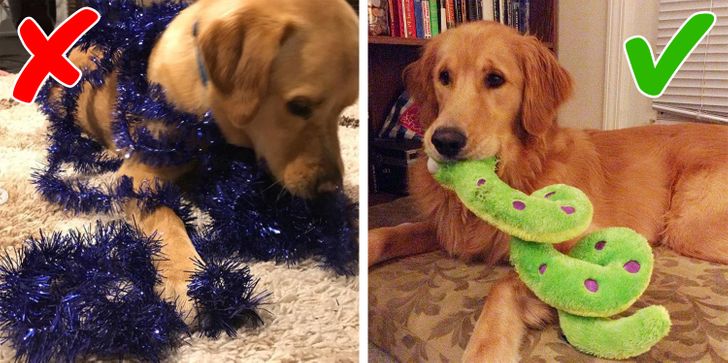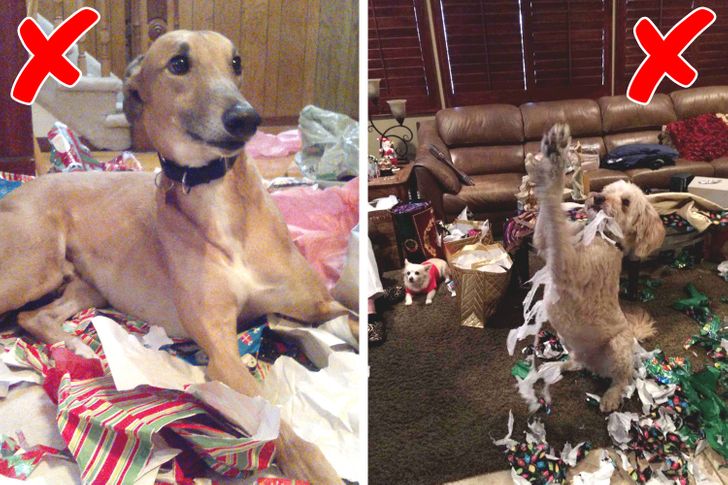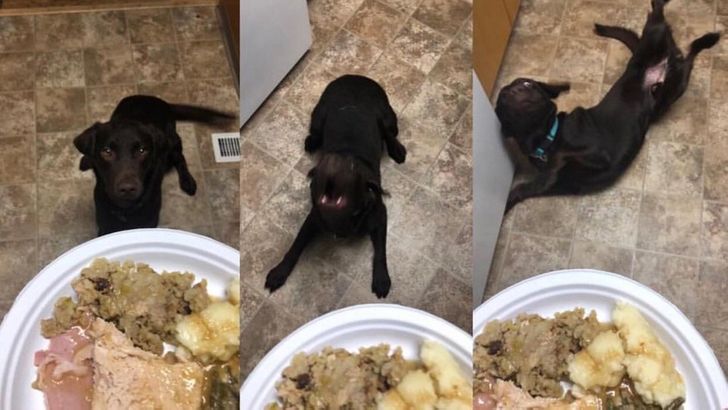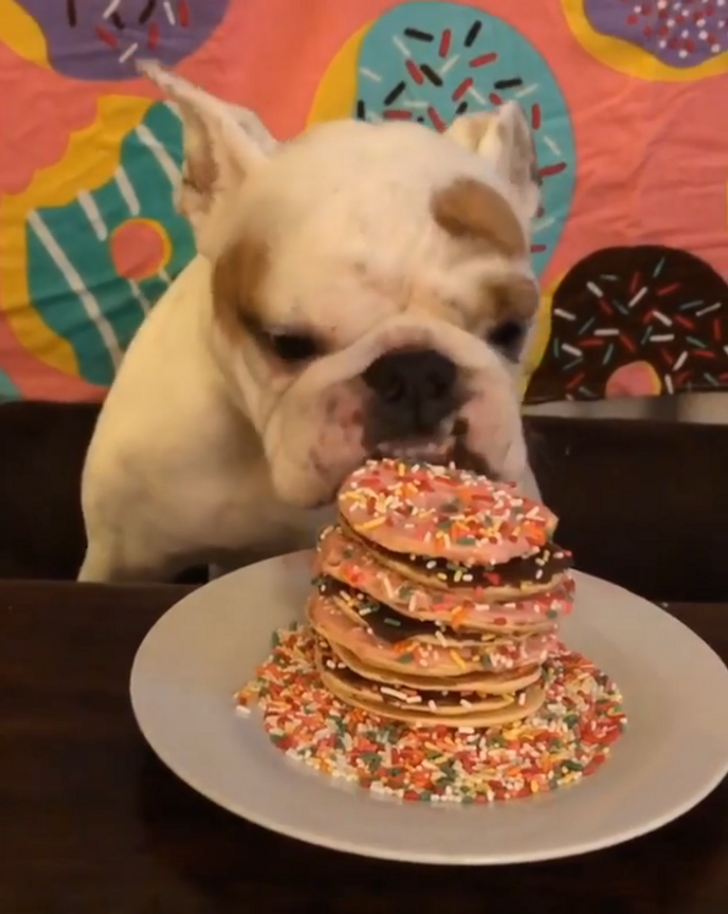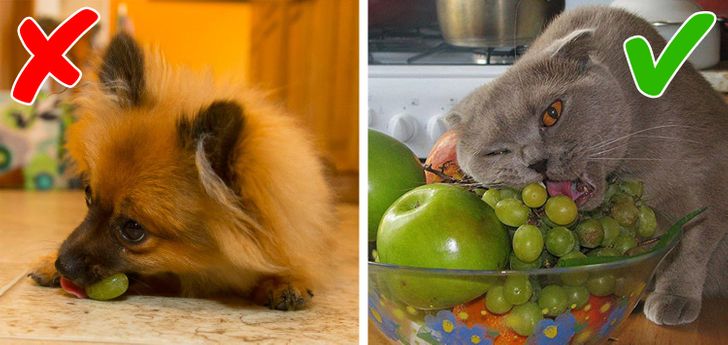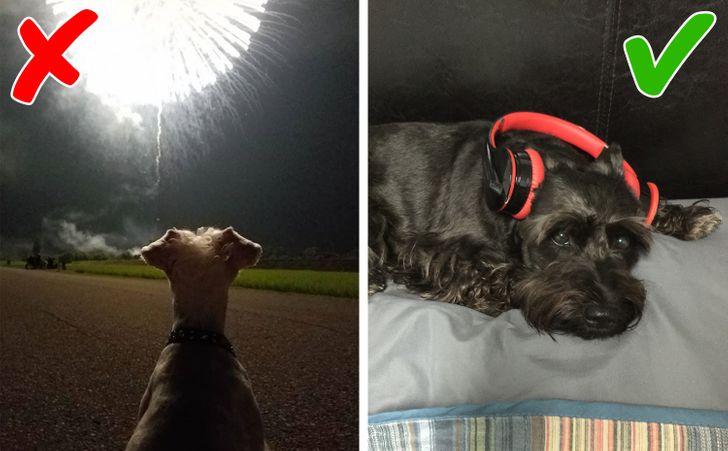People need to know that human food is no good for the pets. Thanks Bright Side!
15 Christmas Dangers Every Pet Owner Should Be Aware Of
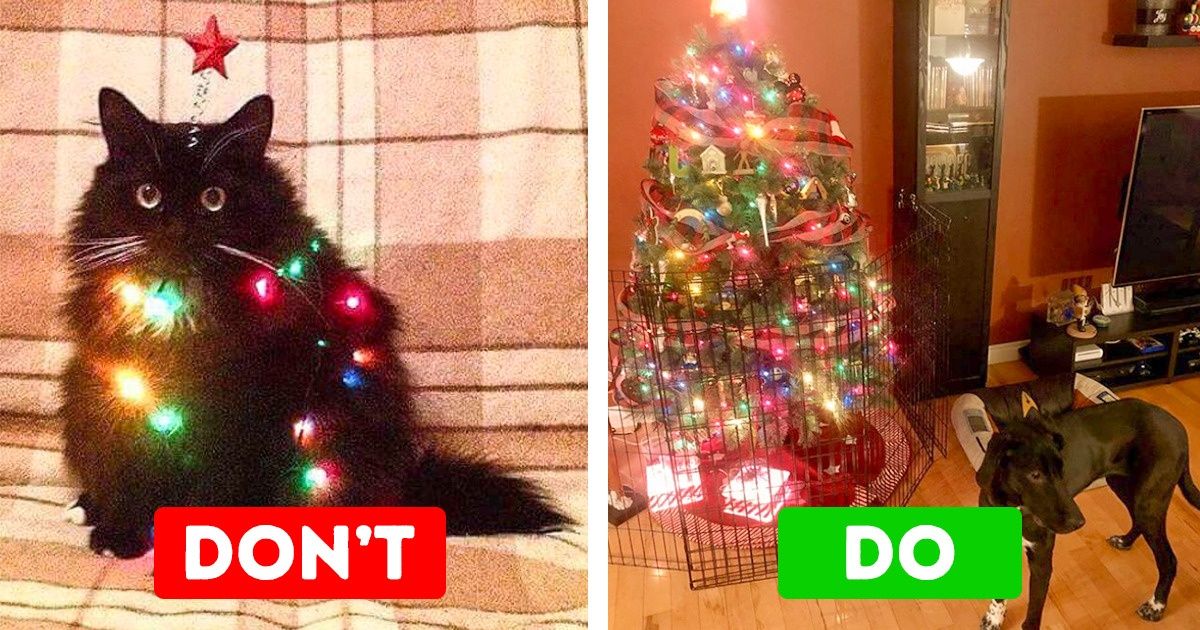
Over 780% more cases of chocolate poisoning in pets are caused over Christmas in the UK, according to Vets Now pet emergency services. Even though most pet owners are aware of the toxicity of chocolate along with other foods like nuts, onions, and fatty foods, it is found that most dogs have still experienced a bout food poisoning during the holiday season. Just a few squares of dark chocolate can risk an average dog’s life.
Since it’s almost Christmas and the holiday period has started, at Bright Side we gathered all the holiday things that can be harmful to our furry friends to help you keep your pet safe.
1. Christmas lights & batteries: The ultimate anti-pet stuff
As with children, the same safety measures apply to pets. It is crucial to cover any wires and batteries and make them inaccessible to our pets. Our friends can easily be burned or even electrocuted by curiously chewing Christmas lights and their cables, while batteries can cause mouth and esophagus burns and internal injuries. In order to enjoy the holiday season with our pets, it’s important to steer pets clear of such dangerous decorations.
2. Christmas tree: Oh! you are not for pets.
Most of the people who can’t have Christmas without a Christmas tree prefer to decorate a real fir. Pine needles can be a great danger for your pet causing issues from vomiting and diarrhea, if swallowed, and swelling and mouth injuries, if chewed. Other than that, stagnant water from the tree can cause nausea or diarrhea in your pet. If you prefer an artificial tree there is also a reason to secure the area around it, because the thin strips of fake needles can also be swallowed and cause irritation and potential blockage to your pet.
In any case, make sure to secure and stabilize the tree to the ground so that it won’t fall and injure your pet. You can also use a playpen around it so it’s unreachable to curious paws. For cats, however, any security measure can be considered poor since climbing is their second nature, so a good idea could be a plywood Christmas tree cutout, a fake tree out of paper or wood, a triangle-shaped shelf with decorations on it, or maybe a tower of books in the shape of a tree.
3. Candles: Lights on, candles out.
Nothing brings the Christmas spirit into our homes like candles do. But if you are a pet parent, it is really crucial to never leave burning candles unattended. Pets might easily burn themselves, their paws, and noses. They are curious to taste or smell the new thing and may even cause a fire by knocking over a burning candle. If you decide to light a candle, secure the table surface it is on and if you leave the room, remember to blow it out.
4. Chocolate: The never, ever pet treat
Our canine friends seem to adore chocolate, while cats don’t really go for it unless you give it to them. However, in both cases, chocolate is one of the worst food enemies for our pet’s well-being. Theobromine is a chocolate substance that can be found in higher amounts in darker chocolates and it is toxic for our pets. That means that every food that contains cocoa can be poisonous for both cats and dogs and put their life at risk.
Signs of chocolate toxicity are vomiting, diarrhea, rapid heart rate, hyperactivity, weakness, tremors, seizures, and worse than that, death. Fat and sugar, in general, can cause belly ache and lead to pancreatitis, an inflammation of the pancreas.
5. Holiday plants: Deadly beautiful poinsettias, holly, mistletoe, and lilies
No matter how beautiful Christmas plants might look and smell they can be poisonous for pets. Poinsettias can cause mouth swelling, stomach ache, and vomiting if eaten. The same effect will happen if kids ingest it. Holly also has the same effects while mistletoe can lead to collapse and death in some cases. It’s really important to be aware of lilies effects on our cats. This beautiful flower doesn’t really affect dogs, but is toxic to cats. A safe way to decorate is to choose plastic or silk artificial flowers or maybe a pet-safe flower option.
6. Cooked bones: Not a good idea for a treat.
It is believed that a dog’s favorite holiday dish is of course bones. But that doesn’t go along with the vet’s advice. Cooked bones are extremely brittle and can easily break into thin little pieces that can severely harm your pet’s stomach causing gastrointestinal tract issues. It’s important to remember to not throw the leftovers from our holiday meals into our pet’s bowl, because it might be life-threatening for our friend. It’s better to offer them chew toys or treats that are especially digestible for dogs and cats.
7. Snow globes: A fairy tale danger
We all love snow globes and most of us secure a special place every year for them among other festive decorations. However, these mesmerizing glass decorations are a great danger for our pets. They are easily breakable and that by itself can be hazardous as the broken glass can be harmful to the paws of our pets and if swallowed, for their mouth, stomach, and gastric system.
Kitties are the ones most threatened by the antifreeze which most snow globes contain. Even a tablespoon amount of it can be lethal for a cat. If you are a cat owner it is better to avoid snow globes, as we all know that there is no such thing as “un-reachable” in a cat’s mind.
8. Tinsel & ribbons: Not pet toys
Even though both tinsel and ribbons seem like the perfect pet toy, it is the exact opposite of a toy since they can cause choking and blockages in an animal’s stomach. Cats especially seem to be really attracted to this sparkly, easily catchable toy. However, tinsel’s thin strips of sparkling plastic can be easily swallowed and cause bellyaches, vomiting, and obstructed digestive tracts. So, it’s much better to avoid decorating your home with these things.
9. Christmas ornaments: Not all sparkly things bring joy.
Everyone likes a sparkly glowing Christmas tree, especially kitties. Shiny glass baubles and plastic ornaments are better to be replaced to avoid probable accidents. Breakable ornaments can be chewed and swallowed and cause severe injuries to your pet’s mouth, esophagus, and stomach. In order to avoid these cases, make sure nothing is accessible to little paws and secure any decorated areas. A good idea is to place a playpen around the Christmas tree.
10. Wrapping paper: Presents for your friends should be stored away from your pet.
Christmas is a season of exchanging gifts and many times creating our own unique DIY presents and wrapping decorations for our loved ones. In these cases, wrapping paper should be securely stored away from our pets’ attention. Eating a lot of paper can cause an obstruction in the animal’s stomach. Make sure to safely secure the areas where your friend is hanging out.
11. Fatty, spicy, & very rich foods: Like lamb roast and sausages
Fat and sugar, in general, are not well tolerated by dogs and cats and can cause a bellyache. However, in many cases, pets were taken to emergency vet clinics because they overindulged in fatty foods like sausages, bacon, and lamb. In that case, it is possible for this to lead to pancreatitis, an inflammation of the pancreas that can be really risky for your pet’s health. In most cases, it is treated with hospitalization and special therapy, but sometimes when severe, can be fatal.
12. Salt dough ornaments: They might smell delicious, but they’re a no-no.
Salt dough ornaments are made out of baked dough and contain water, salt, and flour, a potentially fatal mix for our pets. It’s a really popular type of ornament, especially in schools before the Christmas holidays because it is easily made, DIY, and uniquely designed. However, cats and dogs might be curious enough to taste this food-ornament delight and the results could be truly sad.
13. Sweets: Avoid anything with xylitol or sugar.
When it comes to sweet-pet-enemies it’s not only chocolate that we have to worry about. Pets can also suffer from human illnesses like obesity, diabetes, and dental problems. Anything that contains sugar or xylitol, which is a sugar alcohol used as a sugar substitute, should be avoided. Some candies, gums, diet foods, and pastry goods might contain this ingredient that can cause severe effects in your pet like liver failure, a drop in blood sugar, and seizures. It’s better to keep our pets away from the festive table in order to avoid any mince pie and Christmas pudding stealing.
14. Other hazardous foods: Onions, garlic, raisins, and nuts
Allium species include chives, cultivated onion, shallot, garlic, scallion, and leeks which are all poisonous to dogs. Along with that, a tasty delicacy for us, blue cheese, can be also harmful to cats and dogs because of roquefortine C a substance which both animals are sensitive to. However, just like with chocolate, cats are not going for it unless you feed it to them.
Dogs are pretty unlucky when it comes to nuts and grapes, because they taste good to them, but most of them are toxic, especially macadamia nuts and raisins which can cause severe illnesses. On the other hand, cats are not really affected by nuts or grapes.
15. New Year’s noise: Take it down a notch.
The New Year’s countdown is usually accompanied by fireworks, loud noises, confetti, and noisy poppers. Most pets are terrified of loud noises, especially fireworks and poppers. The sensitive hearing of our pets can be damaged by these loud noises and get distressed. Plus, confetti can be eaten and need extraction by surgery. Make sure to avoid confetti and poppers in the house. And, near midnight, secure your pet in a quiet room with the shutters and windows closed with calming music on in order to help your friend feel comfortable and safe.
Are you a pet parent? Do you know of any more potential dangers that can harm our beloved friends? Tell us in the comment section below.
Comments
I had no idea that xmas flowers can be lethal to dogs and cats. It's so good to know!
Related Reads
I Refuse to Let Heartless Parents Ruin My Daughter’s Birthday
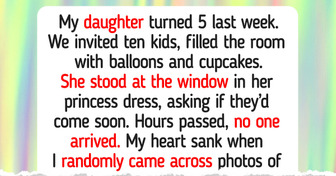
10 Real Moments That Hit Harder Than Any Movie Scene
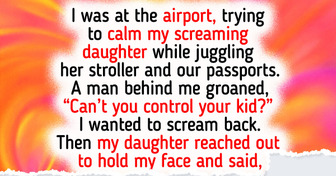
15 Stories That Show Kindness Is the Quiet Power the World Often Forgets

10 People Who Still Chose Kindness Even When Life Tested Them

I Knew My Son Was Ashamed of My Job—but His Next Move Hurt Me Deeply
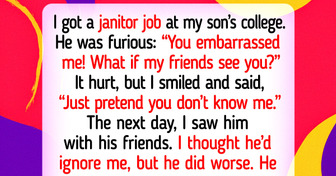
I Confronted My Coworker During Lunch—HR’s Response Shocked Me
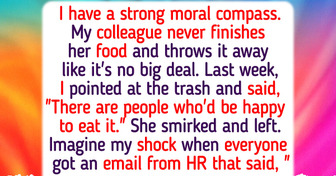
13 Stories Proving That Female Solidarity Turns Ordinary Women Into Legends

My Parents Gave My Brother the House They Promised Me—And They Learned Their Lesson
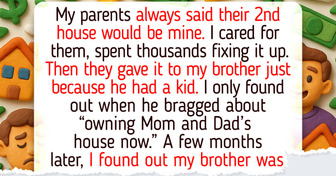
I Refuse to Help My Homeless Mom After She Spent All Her Retirement Money on My Sister
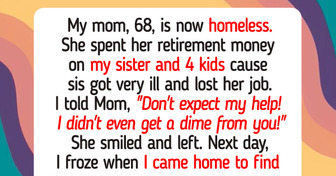
10 Moments That Proved the Worst Betrayal Comes From Home
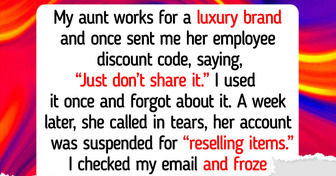
15 Stories That Prove a Small Spark of Kindness Can Light Up a Fading Soul

18 Stories That Prove a Cleaner’s Job Is About More Than Just Dusting

